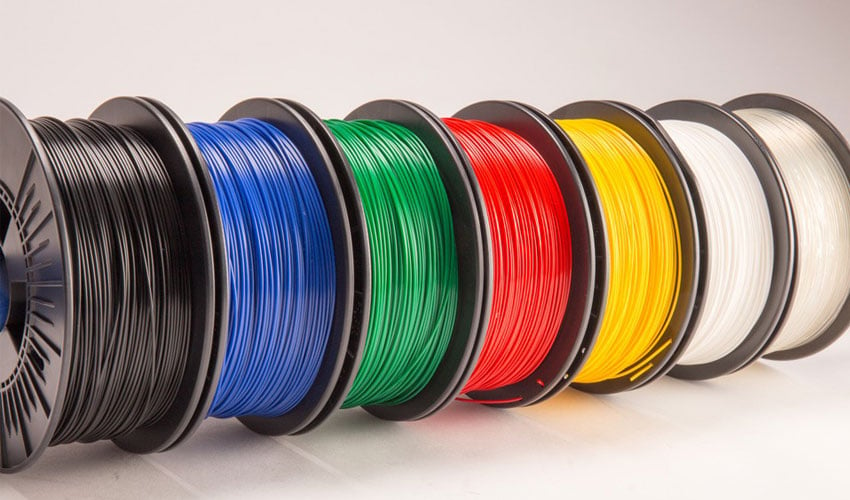Filaments represent the raw material which is used to create 3D objects with fused deposition modeling 3D printers. They look like long, thin strings that can have a lot of different colours, and are made of a thermoplastic material A type of plastic polymer that becomes soft and pliable when heated and hardens when cooled, and can be repeatedly melted and reshaped without significant degradation . Filaments come in a range of diameters, most commonly 1.75 mm and 2.85 mm, with the latter often being confused with the less common 3 mm. Filaments consist of one continuous slender plastic thread spooled into a reel.

Types of filaments: Below is an overview of the most frequently used types of filaments, however, nowadays, there is an
extremely wide variey of other materials than can be used.
Since the range of different filaments than can be used when 3D Printing is so wide, here is an overview of the particular use-cases, as well as, pros and cons of using the 4 most popular types of filaments.
1.PLA
Use-case
Pros
Cons
2. ABS
Use-case
Pros
Cons
3. PETG
Use-case
Pros
Cons
4. TPU
Use-case
Pros
Cons
If you want to print an object with multiple colours, you are going to have to swap the filaments within the printing process. Here is a short instruction list on how to change the filament in the 3D Printer that will be used in the exhibiton phase for this tutorial. (For many other types of 3D printers, this process is very similar, unless you are using a 3D Printer which automatically switches filaments during the printing process.)

Here are some specialised terms that are frequently used when talking about filaments and their use in the process of 3D Printing.
| Support | Auxiliary structure printed along with a model to ensure successful printing of overhangs, bridges, and other complex features. | |
| Brim | A flat, single-layer area printed around the base of a model, acting as a border to improve adhesion and reduce warping. | |
| Infill | The internal structure within a printed object that supports the outer walls and affects its strength, weight, and material usage. | |
| Raft | A temporary, extra layer of material placed between the build plate and the 3D printed object. |
Test the knowledge you have accumulated from this chapter by completing this interactive Quiz Test!